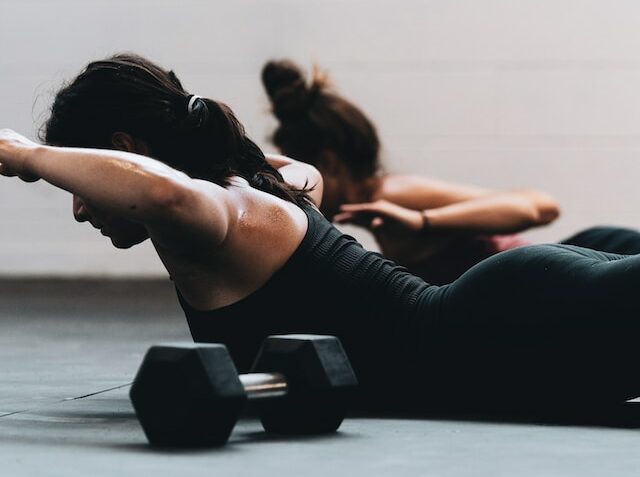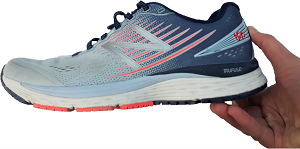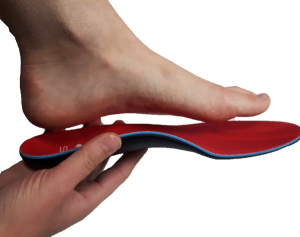
Considerations for Exercise Changes
A new year can mean making changes to your exercise routine. When making changes, this can be starting up exercise all together, or it can be other changes such as:
- Trying a new activity
- Increasing how many days you exercise per week
- Increasing the duration of each exercise session
- Increasing the weight you are using
When making changes to your exercise, there are a few considerations to keep in mind to prevent pain from developing. About 40-60% of people will drop their new years resolution for exercise in the first month. While there are multiple reasons for this, pain can be a major factor. To help improve your chances of maintaining your exercise changes, here are a few tips to help prevent pain!
Gradual Changes
One way to avoid pain from developing is to gradually introduce change to your exercise routine. When change is introduced to the body, it needs time to adapt. The muscles, ligaments, tendons and all the structures and systems in the body take time to adapt to the change. If they are overwhelmed without the chance to recover properly, injury is more likely to occur.
When you exercise, the muscle fibers will break down to be built up stronger. If these fibers break down too much and are not able to recover properly, the muscle fibers become weak enough to cause injury.
Not only do these gradual changes help with pain, but it can also be easier mentally to adapt to the change. When changes are introduced gradually, the task doesn’t seem as drastic, and can be more easily added to your routine. For example, adding an extra 5 or 10 minutes a day can seem very reasonable versus adding an extra hour to the day.
How to make changes
First, think about these four ways you can introduce change:
- New activity
- Days of exercise per week
- Duration of each exercise session
- Weight being used
When you decide to make a change, only increase one of these four ways at a time. This will help the body adapt properly. For example, if you decide to add an extra 10 minutes to your workout, don’t also add an extra 5 pounds to your weights. Wait to add the extra weight until after you have adapted to the additional 10 minutes.
The time to adapt will vary on each person and their circumstances. A circumstance to consider is how often you do that particular exercise per week. If you only focus on a particular part of the body once a week, it will take longer to adapt. One person may find adaptation takes a week, where another may take months to adapt. A good way to determine when your body has adapted, is to monitor how you are feeling. If your exercise is starting to feel easy, or you are feeling like improvements are reducing, that is a good time to introduce another change.
Change is good for the body as it keeps you moving towards your goals and prevents these goals from plateauing.
Shoes
Shoes are another important consideration to prevent pain for exercise changes. The appropriate type, support and size all provide ways to reduce the chance of injury.
Shoe type
The type of shoe for the activity can be important in many cases, as these shoes have features specific to the activity you are doing.
For a general exercise shoe, a running shoe is a great option for a few reasons. The cushioning in a running shoe is great for high impact. They are lighter weight to prevent the muscles from tiring over long forms of exercise. They also provide good structure to support the foot from moving around too much.
A walking shoe is great if you plan to do more walking. Although they tend to be heavier than a running shoe, that is offset by something called a rocker sole. It helps roll your foot forward and reduce unnecessary stress on specific muscles. The rocker sole is also a great way to reduce stress on the ball of the feet. Walking shoes typically last longer than a running shoe as they have a stronger sole on them.
Sport specific shoes typically have performance in mind, but they can also help to reduce injury. For example, baseball and soccer cleats are ridged on the bottom which can help prevent slips on the grass and dirt. Court shoes are designed with a gripped bottom to prevent slips on slippery surfaces.
Shoe fit
The fit of the shoe is important to prevent excessive pressure or slipping and sliding inside of the shoe.
During exercise, the feet will slide forward in the shoe because of the amount of force the feet deal with. When the shoe is too small, this sliding forward in the shoe can cause bruising to the nails and cause the toes to curl up. Pain at the ball of the foot and toes can develop because of this. If the shoe is too narrow, this can also cause an issue. Because there is more blood flowing during exercise, the feet may swell slightly, and the narrow shoe can cut off circulation to the toes and compress the toes inwards. Compressed toes can lead to pain at the ball of the foot and toes as the structures running through the ball of the feet become compressed as well.
If the shoes are too big, they will slide around the shoe causing blisters and/or unnecessary muscle contraction in the feet and lower legs.

Shoe support
The structure of the shoe can improve comfort and prevent pain from developing. A flimsy shoe allows the foot to move around, which is exaggerated during exercise. For example, if the arch is collapsing when standing or walking, the arch will collapse even further during exercise because of the increased force. This is why pain may only start to develop after changing an exercise routine.
To find a supportive shoe, there are two tests to perform! First, make sure the midsole (middle) doesn’t bend or move very easily. The second test is to make sure the heel does not collapse when pushing at the back.
Another consideration for shoe support, is to make sure your shoe has not worn out. Overtime, the materials in the shoe start to break down, which reduces the support and cushioning. The shoe can also exaggerate the way your foot typically moves, as it will wear down in the areas you use most often. On average, most people need to replace their shoes every year. This can be more or less depending on how often the shoe is used!
 Foot Support
Foot Support
Support for your feet can be a great way to deal with existing pain and to prevent pain from developing.
As you change up your exercise, the stress on your body changes. Any existing issues with your feet can become a problem at this time. Support through arch support and realigning the feet can reduce the extra stress the body takes during exercise changes.
An assessment of the feet and how you are walking is a great place to start. This provides a better understanding of how the feet could potentially cause pain or how they are contributing to current pain.
If you already wear custom made foot orthotics or over the counter inserts, an assessment of your current devices is a great idea. The feet can change over time and the inserts will wear out. An assessment will determine if an updated pair is recommended, or if changes are needed to the current pair.
Conclusion
To set yourself up for the best success, it’s a great idea to make a plan in preventing pain before starting any exercises changes.
If you have questions about your own feet, feel free to book an appointment!

You must be logged in to post a comment.